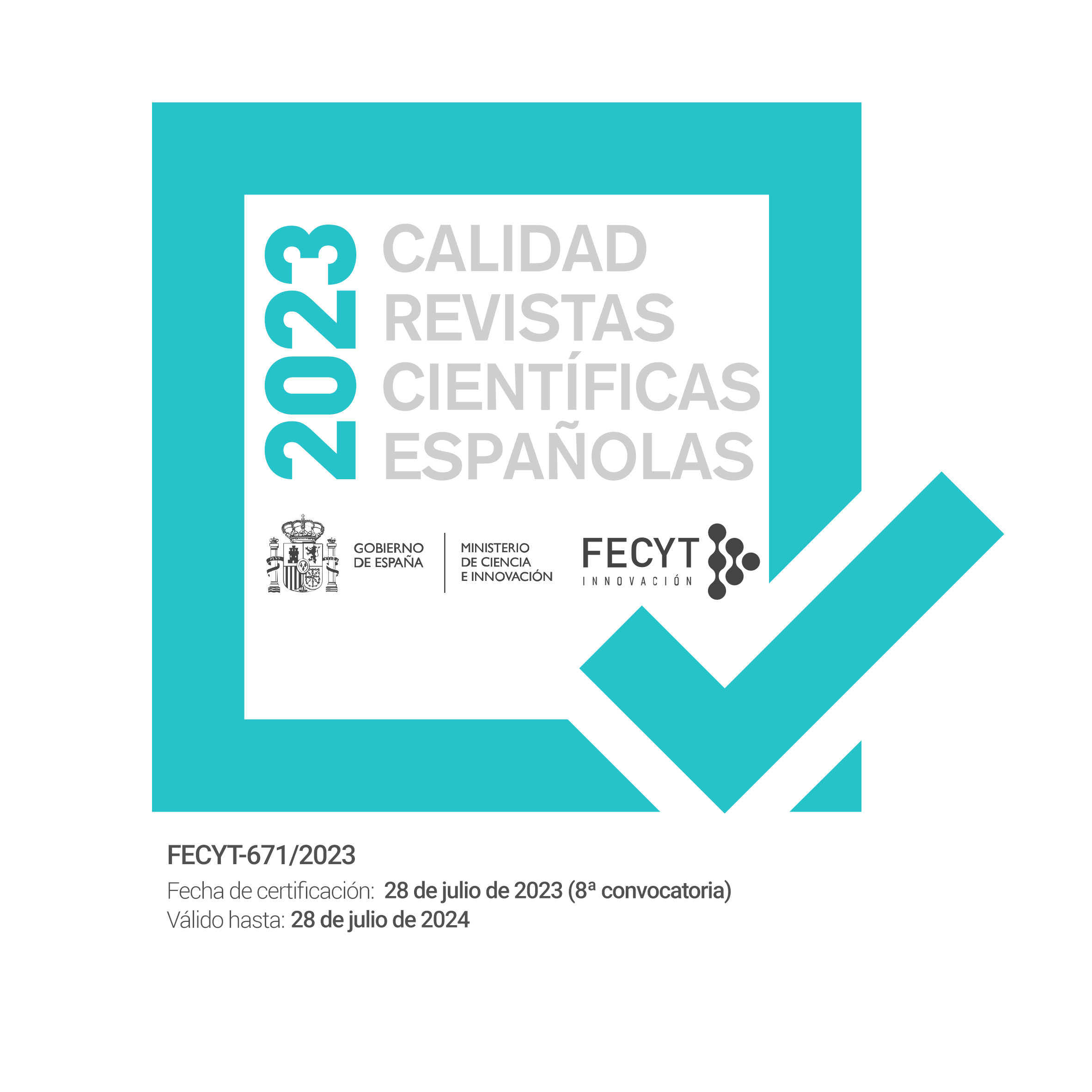Assembling Containment at European Union Borders: Between Inclusion and Exclusion
DOI:
https://doi.org/10.17561/tahrj.v22.7773Keywords:
European Union, Migration governance, European Court of Human Rights, Assemblage, Human RightsAbstract
The European Union migration governance is characterised by non-linearity and complexity. Such governance represents the competition of a multitude of actors that compete for power and visibility. The policies designed by its member states - based on the decisions of the European Court of Human Rights - oscillate between an inclusive and an exclusive migration governance approach. A concept that can offer a comprehensive understanding of the social and normative dynamics that transformed the Mediterranean Sea as a space of inclusion and exclusion is assemblage. The article suggests that the EU and its member states design migration governance policies on an instrumental assemblage of borders, territory and human rights. From the discussion of these assemblages, it emerges how the compromise developed by the European Court of Human Rights contributed to further exclusion and human rights violations in the Mediterranean Sea. Thus, assemblage offers a critical perspective on the normative limits of the migration management policies unfolding at EU borders.
References
ABIZADEH, A. (2008). “Democratic theory and border coercion: no right to unilaterally control you own borders”, Political Theory, 36(1), pp. 37–65. https://doi.org/10.1177/009059170731
ACUTO, M., & Curtis, S. (2014). Reassembling international theory: Assemblage thinking and international relations. London: Palgrave Macmillan. https://doi.org/10.1057/9781137383969_1
AGAMBEN, G. (1998). Homo Sacer: sovereign power and bare life. Stanford: Stanford University Press.
AGNEW, J. (1994). “The territorial trap: the geographical assumptions of international relations theory”, Review of International Political Economy, 1(1), pp. 53–80. https://doi.org/10.1080/09692299408434268
AGNEW, J. (2008). “Borders on the mind: re-framing border thinking”, Ethics & Global Politics, 1(4), pp. 175–191. https://doi.org/10.3402/egp.v1i4.1892
ALLEN, J. (2011). “Powerful assemblages?”, Area, 43(2), pp. 154–157. https://doi.org/10.1111/j.1475-4762.2011.01005.x
ANDERSON, J. (2012). “Borders in the new imperialism”. Wilson, T. M., and Hasting D. (eds) A Companion to Border Studies, Hoboken: Wiley Blackwell, pp. 139–157.
ANDERSON, B., and McFARLANE, C. (2011). “Assemblage and geography”, Area, 43(2), pp. 124–127. https://doi.org/10.1111/j.1475-4762.2011.01004.x
ANDREAS, P. (2003). “Redrawing the line: Borders and security in the twenty-first century”, International Security, 28(2), pp. 78–111
ANEESH, A. (2017). “Relocating global assemblages”: An interview with Saskia Sassen', Science, Technology and Society, 22(1), pp. 128–134. https://doi.org/10.1177/0971721817694927
ALBRECHT, H. J. (2002). “Fortress Europe?-controlling illegal immigration”, European Journal of Criminal Law and Criminal Justice, 10(1), pp. 1–22. https://doi.org/10.1163/157181702
BADIE, B. (1996). “La fin des territoires westphaliens”, Géographie et Cultures, 20, pp. 113–118.
BADIOU, A. (2010). The communist hypothesis. London: Verso.
BALIBAR, E. (2012). Politics and the other scene. London: Verso.
BANAI, A., MOORE, M., MILLER, D., NINE, C., & DIETRICH, F. (2014). “Symposium theories of territory beyond Westphalia”, International Theory, 6(1), pp. 98–104. https://doi.org/10.1017/S1752971914000013
BASARAN, T. (2008). “Security, law, borders: spaces of exclusion”, International Political Sociology, 2(4), pp. 339–354. https://doi.org/10.1111/j.1749-5687.2008.00055.x
BAXI, U. (2006). “Politics of reading human rights: Inclusion and exclusion within the production of human rights”. Meckled Garcia, S. and Basak, C. (eds) The legalization of human rights: multidisciplinary perspectives on human rights and human rights law. London: Routledge, pp. 182–200.
BAXI, U. (2007). The future of human rights. Oxford: Oxford University Press.
BIALASIEWICZ, L. (2012). “Off-shoring and out-sourcing the borders of Europe: Libya and EU border work in the Mediterranean”, Geopolitics, 17(4), pp 843–866. https://doi.org/10.1080/14650045.2012.660579
BRENNER, N., and ELDEN, S. (2009). “Henri Lefebvre on state, space, territory”, International Political Sociology, 3(4), pp. 353–377. https://doi.org/10.1111/j.1749-5687.2009.00081.x
CAMPESI, G. (2018). “Crisis, migration and the consolidation of the EU border control regime”, International Journal of Migration and Border Studies, 4(3), pp. 196–221. https://doi.org/10.1504/IJMBS.2018.093891
CHETAIL, V. (2016). “Sovereignty and migration in the doctrine of the law of nations: An intellectual history of hospitality from Vitoria to Vattel, European Journal of International Law, 27(4), pp. 901–922. https://doi.org/10.1093/ejil/chw059
COLLINS, F. L. (2018). “Desire as a theory for migration studies: temporality, assemblage and becoming in the narratives of migrants”, Journal of Ethnic and Migration Studies, 44(6), pp. 964–980. https://doi.org/10.1080/1369183X.2017.1384147
CUTTITTA, P. (2007). Segnali di confine. Il controllo dell'immigrazione nel mondo-frontiera. Milano: Mimesis.
CUTTITTA, P. (2018) “Delocalization, humanitarianism, and human rights: The Mediterranean border between exclusion and inclusion”, Antipode, 50(3), pp. 783–803. https://doi.org/10.1111/anti.12337
CUTTITTA, P., and LAST, T. (eds) (2019). Border deaths: Causes, dynamics and consequences of migration-related mortality. Amsterdam: Amsterdam University Press. https://doi.org/10.5117/9789463722322
DE GENOVA, N. (2016). “The “crisis” of the European border regime: Towards a Marxist theory of borders”, International Socialism, 150, pp. 31–54.
DE GENOVA, N. (eds.) (2017). The borders of" Europe": Autonomy of migration, tactics of bordering. Durham: Duke University Press.
DE GENOVA, N., MEZZADRA, S., and PICKLES, J. (2015). “New keywords: Migration and borders”, Cultural Studies, 29(1), pp. 55–87. https://doi.org/10.1080/09502386.2014.891630
DELANDA, M. (2016). Assemblage theory. Edinburgh: Edinburgh University Press.
DELEUZE, G., & GUATTARI, F. (1988). A thousand plateaus: Capitalism and schizophrenia. London: Bloomsbury Publishing.
DE SOUSA SANTOS, B. (2002). “The processes of globalisation”, Reč, 68(14), pp. 67–131.
DI CESARE, D. (2017). Stranieri residenti. Una filosofia della migrazione. Torino: Editore Bollati Boringhieri.
DUNN, E. C. (2005). Standards and person-making in East central Europe. In A. Ong, & C. Collier (Eds.), Global assemblages: Technology, politics, and ethics as anthropological problems (pp. 173–193). Malden: Blackwell. https://doi.org/10.1002/9780470696569
DÜVELL, F. (2019). “The “Great Migration” of summer 2015: analysing the assemblage of key drivers in Turkey”, Journal of Ethnic and Migration Studies, 45(12), pp. 2227–2240. https://doi.org/10.1080/1369183X.2018.1468385
ELDEN, S. (2013). The birth of territory. Chicago: University of Chicago Press.
FALK, R. (2008). Achieving human rights. London: Routledge.
FLINT, C., and TAYLOR, P. J. (2018). Political geography: World-economy, nation-state, and locality. London: Routledge.
FOUCAULT, M. (2007). “Questions on geography” in Crampton, J. V., and Elden, S., (eds) Space, knowledge and power: Foucault and geography. London: Routledge, pp.173–182.
FRANKENBERG, G. (2014). “Human rights and the belief in a just world”, International Journal of Constitutional Law, 12(1), pp. 35–60. https://doi.org/10.1093/icon/mot068
GAMMELTOFT-HANSEN, T., & HATHAWAY, J. C. (2014). “Non-refoulement in a world of cooperative deterrence”, Columbia. Journal of Transnational Law, 53(2), pp. 235–284. https://doi.org/ssrn.2479511
GEIGER, M., and PÉCOUD, A. (eds.) (2010). The politics of international migration management. London: Palgrave Macmillan.
GEIGER, M., and PÉCOUD, A. (eds.) (2017). International organisations and the politics of migration. London: Routledge.
GHEZELBASH, D., MORENO-LAX, V., KLEIN, N., and OPESKIN, B. (2018). “Securitization of search and rescue at sea: the response to boat migration in the Mediterranean and offshore Australia”, International & Comparative Law Quarterly, 67(2), p. 315–351. https://doi.org/10.1017/S0020589317000562
GIUFFRÉ, M., and MORENO-LAX, V. (2019). “The rise of consensual containment: from contactless control to contactless responsibility for migratory flows” in Juss, S. (ed) Research handbook on international refugee law. Cheltenham: Edward Elgar Publishing, pp. 82–108.
GOTTMANN, J. (1975). “The evolution of the concept of territory”, Information (International Social Science Council), 14(3), pp. 29–47.
GREGORY, D., JOHNSTON, R., PRATT, G., WATTS, M., and WHATMORE, S. (eds.) (2011). The dictionary of human geography. Chichester: John Wiley & Sons.
GUIRAUDON, V., & LAHAV, G. (2000). “A reappraisal of the state sovereignty debate: The case of migration control”, Comparative Political Studies, 33(2), pp. 163–195. https://doi.org/10.1177/0010414000033002
HAMPSHIRE, J. (2016). “European migration governance since the Lisbon treaty: introduction to the special issue”, Journal of Ethnic and Migration Studies, 42(4), p. 537–553. https://doi.org/10.1080/1369183X.2015.1103033
HASSNER, P. (1997). “Obstinate and obsolete: Non-territorial transnational forces versus the European territorial state” in Tunander, O., Baev, P. K., and Einagel, V. I. (eds) Geopolitics in post-wall Europe: Security, territory and identity. New York: Sage Publications, pp. 45–58.
JOHNSON, C., JONES, R., PAASI, A., AMOORE, L., MOUNTS, A., SALTER, M., and RUMFORD, C. (2011). “Interventions on rethinking “the border” in border studies”, Political Geography, 30(2), pp. 61–69. https://doi.org/j.polgeo.2011.01.002
KENNEDY, D. (2002). “International human rights movement: Part of the problem?”, Harvard Human Rights Journal, 15, pp. 99–101.
KHAN, D. E. (2012). “Territory and boundaries” in Fassbender, B., and Peters, A. (eds) The Oxford handbook of the history of international law. Oxford: Oxford University Press, pp. 225–241. https://doi.org/10.1093/law/9780199599752.001.0001
KLEIN, N. (2007). The shock doctrine: The rise of disaster capitalism. New York: Macmillan.
KOSKENNIEMI, M. (2010). “Human rights mainstreaming as a strategy for institutional power”, Humanity: An International Journal of Human Rights, Humanitarianism, and Development, 1(1), pp. 47–58. https://doi.org/10.1353/hum.2010.0003
LEÓN, A. I. and OVERBEEK, H. (2015). “Neoliberal globalization, transnational migration and global governance.” in Talani, L. S., and McMahon, S. (eds.) Handbook of the international political economy of migration. Cheltenham: Edward Elgar Publishing, pp. 37–53. https://doi.org/10.4337/9781782549901
LI, T. M. (2007). Practices of assemblage and community forest management. Economy and Society, 36(2), 263–293. https://doi.org/10.1080/03085140701254308
LORCA, A. B. (2017). “Human rights in international law? The forgotten origins of human rights in Latin America”, University of Toronto Law Journal, 67(4), pp. 465–495. https://doi.org/10.3138/utlj.67.8
MACKLEM, P. (2015). The sovereignty of human rights. Oxford: Oxford University Press.
MAINWARING, Ċ. (2016). “Migrant agency: Negotiating borders and migration controls”, Migration Studies, 4(3), pp. 289–308. https://doi.org/10.1093/migration/mnw013
MANN, I. (2017). Human rights as thought experiments, Journal of International Law & International Relations, 13(20), pp. 20–25.
MARCUS, G. E., and SAKA, E. (2006). “Assemblage”, Theory, Culture and Society, 23(2-3), pp. 101–106. https://doi.org/10.1177/026327640606
MARKS, S. (2009). “False contingency”, Current Legal Problems, 62(1), pp. 1–21. https://doi.org/10.1093/clp/62.1.1
MARKS, S. (2012). “Four human rights myths” in Kinley, D., Sadurski, W., and Walton, K. (eds.) Human rights: old problems, new possibilities. Cheltenham: Edward Elgar Publishing., pp. 217–235.
MCCANN, E., & WARD, K. (eds.). (2011). Mobile urbanism: Cities and policymaking in the global age. Minneapolis: University of Minnesota Press
MCLOUGHLIN D. (2016). “Post-Marxism and the politics of human rights: Lefort, Badiou, Agamben, Rancière. Law and Critique, 27(3), pp. 303–321. https://doi.org/10.1007/s10978-016-9177-0
MEZZADRA, S., and NEILSON, B. (2013). Border as method, or, the multiplication of labor. Durham: Duke University Press. https://doi.org/10.1215/9780822377542
MICKELSON, K. (2014). “The maps of international law: Perceptions of Nature in the classification of territory”, Leiden Journal of International Law, 27(3), pp. 621–639. https://doi.org/10.1017/S0922156514000235
MOORE, M. (2015). A political theory of territory. Oxford: Oxford University Press.
MORENO-LAX, V. (2020). “The architecture of functional jurisdiction: Unpacking contactless control—on public powers, SS and Others v. Italy, and the “operational model””, German Law Journal, 21(3), pp. 385–416. https://doi.org/10.1017/glj.2020.25
MORENO-LAX, V. and LEMBERG-PETERSEN, M. (2019) “Border-induced displacement: The ethical and legal implications of distance-creation through externalization”, Questions of International Law, 56(1), pp. 5–33.
MOYN, S. (2014). “A powerless companion: Human rights in the age of neoliberalism”, Law & Contemporary Problems, 77, pp. 147–169.
MURDIE, A. M., and DAVIS, D. R. (2012). “Shaming and blaming: Using events data to assess the impact of human rights INGOs”, International Studies Quarterly, 56(1), pp. 1–16. https://doi.org/10.1111/j.1468-2478.2011.00694.x
NAIL, T. (2016). Theory of the border. Oxford: Oxford University Press.
NOVAK, P. (2017). “Back to borders”, Critical Sociology, 43(6), pp. 847–864. https://doi.org/10.1177/0896920516644
NOVAK, P. (2019). “The neoliberal location of asylum”, Political Geography, 70, pp. 1–13. https://doi.org/10.1016/j.polgeo.2019.01.007
O'CONNELL, P. (2007). “On reconciling irreconcilables: Neo-liberal globalisation and human rights”, Human Rights Law Review, 7(3), pp. 483–509. https://doi.org/10.1093/hrlr/ngm015
ONG, A., & COLLIER, S. J. (2005). Global assemblages: Technology, politics and ethics as anthropological problems. Malden: Blackwell. https://doi.org/10.1002/9780470696569
PAASI, A. (2003). “Territory”. In Agnew, J. A., Mitchell, K., and Toal, G. (eds.) A companion to political geography. Oxford: Blackwell, pp. 109–122. https://doi.org/10.1108/09504120310503764
PALLISTER-WILKINS, P. (2022). Humanitarian borders: Unequal mobility and saving lives. Verso Books.
PAZ, M. (2016). “Between the kingdom and the desert sun: Human rights, immigration, and border walls”, Berkeley Journal of International Law, 34(1), p. 1–43. https://doi.org/10.15779/Z380P11
PAZ, M. (2017). “The law of walls”, European Journal of International Law, 28(2), pp. 601–624. https://doi.org/10.1093/ejil/chx026
PERUGINI, N., and GORDON, N. (2015). The human right to dominate. Oxford: Oxford University Press. https://doi.org/10.1093/acprof:oso/9780199365012.001.0001
PHILLIPS, J. (2006). “Agencement/assemblage”, Theory, Culture and Society, 23(2/3), pp. 108–109. https://doi.org/10.1177/026327640602300
POPESCU, G. (2011). Bordering and ordering the twenty-first century: Understanding borders. Lanham: Rowman & Littlefield Publishers.
PRINCE, R. (2010). Policy transfer as policy assemblage: Making policy for the creative industries in New Zealand. Environment and Planning A, 42, 169–186. https://doi.org/10.1068/a4224
RAZ, J. (2010). “Human rights in the emerging world order”, Transnational Legal Theory, 1(1), pp. 31–47. https://doi.org/10.1080/20414005.2010.11424500
RUBINOV, I. (2014). “Migrant assemblages: Building postsocialist households with Kyrgyz remittances”, Anthropological Quarterly, 87(1), pp. 183–215. https://doi.org/10.1353/anq.2014.0006
SACK, R. D. (1986). Human territoriality: its theory and history. Cambridge: University Press.
SASSEN, S. (2008). Territory, authority, rights: From medieval to global assemblages. Princeton: Princeton University Press.
SASSEN, S. (2013). “When territory deborders territoriality”, Territory, Politics, Governance, 1(1), pp. 21–45. https://doi.org/10.1080/21622671.2013.769895
SAVAGE, G. C. (2020). What is policy assemblage?. Territory, Politics, Governance, 8(3), 319–335. https://doi.org/10.1080/21622671.2018.1559760
SHACHAR, A. (2020). The shifting border: Legal cartographies of migration and mobility. Manchester: Manchester University Press.
SOHN, C. (2016). “Navigating borders’ multiplicity: the critical potential of assemblage”, Area 48(2), 183-189. https://doi.org/10.1111/area.12248
STEINHILPER, E., and GRUIJTERS, R. J. (2018). “A contested crisis: Policy narratives and empirical evidence on border deaths in the Mediterranean, Sociology, 52(3), 515–533. https://doi.org/10.1177/0038038518759248
THOMAS, C. (2013). “What does the emerging international law of migration mean for sovereignty?”, Melbourne Journal of International Law, 14(2), pp. 392–450. https://search.informit.org/doi/10.3316/agispt.20150678
VAUGHAN-WILLIAMS, N. (2008). “Borders, territory, law”, International Political Sociology, 2(4), pp. 322–338. https://doi.org/10.1111/j.1749-5687.2008.00054.x
VAUGHAN-WILLIAMS, N. (2009). Border politics: The limits of sovereign power. Edinburgh: Edinburgh University Press. https://doi.org/10.3366/edinburgh/9780748637324.001.0001
WIERTZ, T. (2020). “Biopolitics of migration: An assemblage approach”, Environment and Planning C: Politics and Space, 39(7), pp. 1375–1388. https://doi.org/10.1177/2399654420941
ZANINI, P. (1997). Significati del confine: i limiti naturali, storici, mentali. Milano: Bruno Mondadori.
Published
Issue
Section
License
Copyright (c) 2024 Martino Reviglio Della Veneria

This work is licensed under a Creative Commons Attribution 4.0 International License.




























